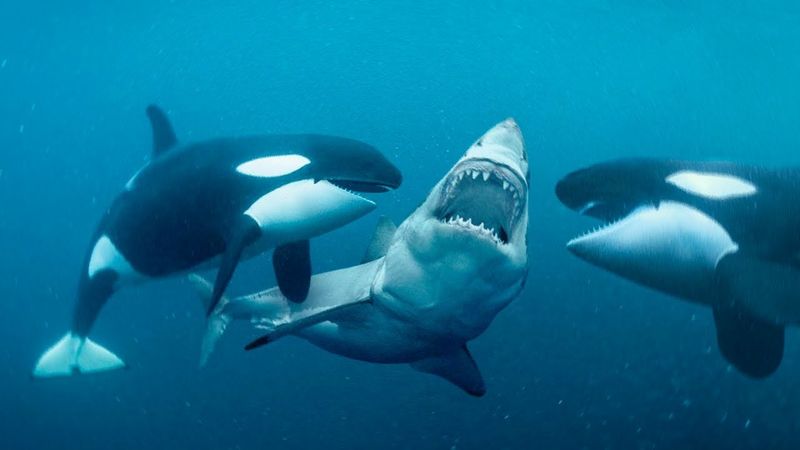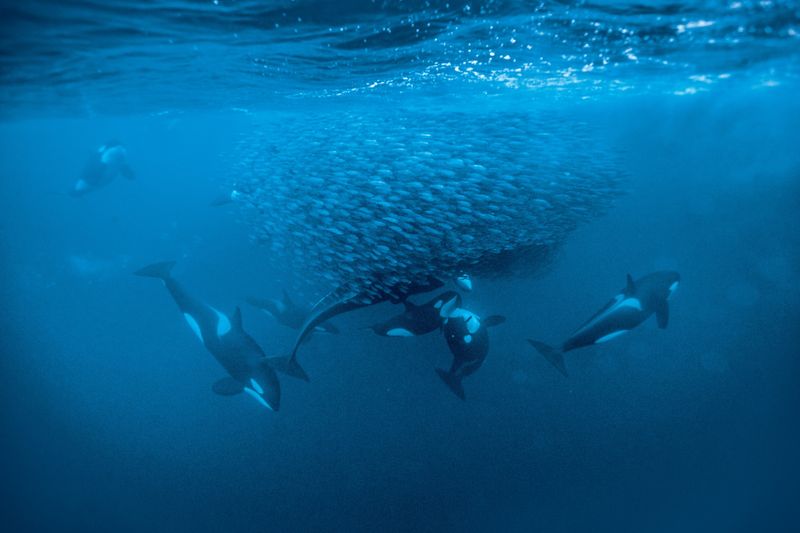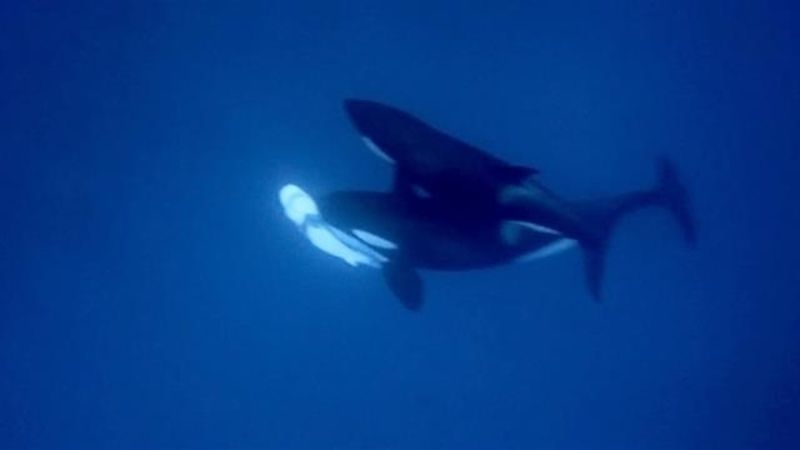Great white sharks aren’t at the top of the food chain. Not even close.
There’s a killer in the water that’s smarter, faster, and terrifyingly strategic—and it’s not what you expect.
Orcas, also known as killer whales, don’t just hunt great whites. They dismantle them with surgical precision. They flip them upside down, paralyze them, and scoop out their prized livers like they’re picking candy from a jar. The rest of the shark? Left to drift, a warning to others.
This isn’t a rivalry. It’s a domination. And the way orcas pull it off will make you question everything you thought you knew about the ocean’s deadliest creatures.
Let’s dive into the brutal brilliance of nature’s most calculated predator—and how it’s rewriting the rules of who rules the sea.
Orca Intelligence

Imagine a predator whose mind is as sharp as its teeth. Orcas, or killer whales, exhibit remarkable intelligence, which plays a crucial role in their hunting strategy. These creatures communicate using sophisticated vocalizations, coordinating their moves like an underwater ballet. Their intelligence allows them to understand the behavior of great whites, anticipating their movements with uncanny precision.
In a world where survival is uncertain, intelligence becomes the greatest weapon. Orcas use this to their advantage, outsmarting their prey. Their brains work tirelessly, deciphering the intricate dance of life beneath the waves. Did you know? Orcas have the second-largest brain among marine mammals.
Social Hunting Tactics

Together, they are unstoppable. Orcas are known for their exceptional social structure, living in pods that operate with synchronicity. Their hunting tactics are a testament to their cooperative nature. Each member of the pod plays a specific role, much like players in a team sport, executing complex strategies to corner their prey.
In the ocean’s vast expanse, collaboration becomes key. Orcas utilize teamwork to isolate and confuse great whites, creating a spectacle of nature’s brilliance. Their unity and precision make them formidable hunters, turning the tides in their favor with every orchestrated move.
Interestingly, each pod has unique hunting techniques.
Unique Hunting Techniques

Innovation at its peak, orcas employ unique hunting techniques that set them apart. Tail-slapping the water, they create powerful waves to disorient their prey. This tactic not only showcases their strength but also their creativity in hunting. These methods demonstrate their ability to adapt to different environments and prey behaviors.
Their ingenuity knows no bounds. Orcas have been observed flipping sharks to induce tonic immobility, rendering them helpless. Such techniques highlight their adaptability and cleverness. With each hunt, orcas prove that innovation is as vital as strength in the natural world.
Did you know? Orcas are one of the few animals known to practice their hunting skills.
Dietary Adaptability

Adaptability defines survival in the ocean’s hierarchy. Orcas exhibit a versatile diet, preying on fish, seals, and even great white sharks. This adaptability gives them an edge, allowing them to thrive in various marine environments. Their diverse palate demonstrates their opportunistic nature, always ready to exploit available resources.
In the face of changing oceanic conditions, this dietary flexibility becomes crucial. Orcas can shift their focus based on prey availability, showcasing their resilience. Such adaptability in diet ensures that orcas remain at the apex, with each meal reinforcing their dominance in the marine food chain.
Natural Predators

In the ocean’s realm, the orca stands unparalleled as a natural predator. With no known enemies, they reign supreme, using their size, intelligence, and tactics to hunt great whites efficiently. Their status as apex predators is solidified by their ability to hunt formidable prey like the great white, showcasing nature’s hierarchy.
Orcas embody the essence of power and balance in the ocean. Their predatory role ensures the health and stability of marine ecosystems. By hunting great whites, they maintain the delicate balance of the ocean’s food web, proving that in nature, even the fiercest have their predators.

